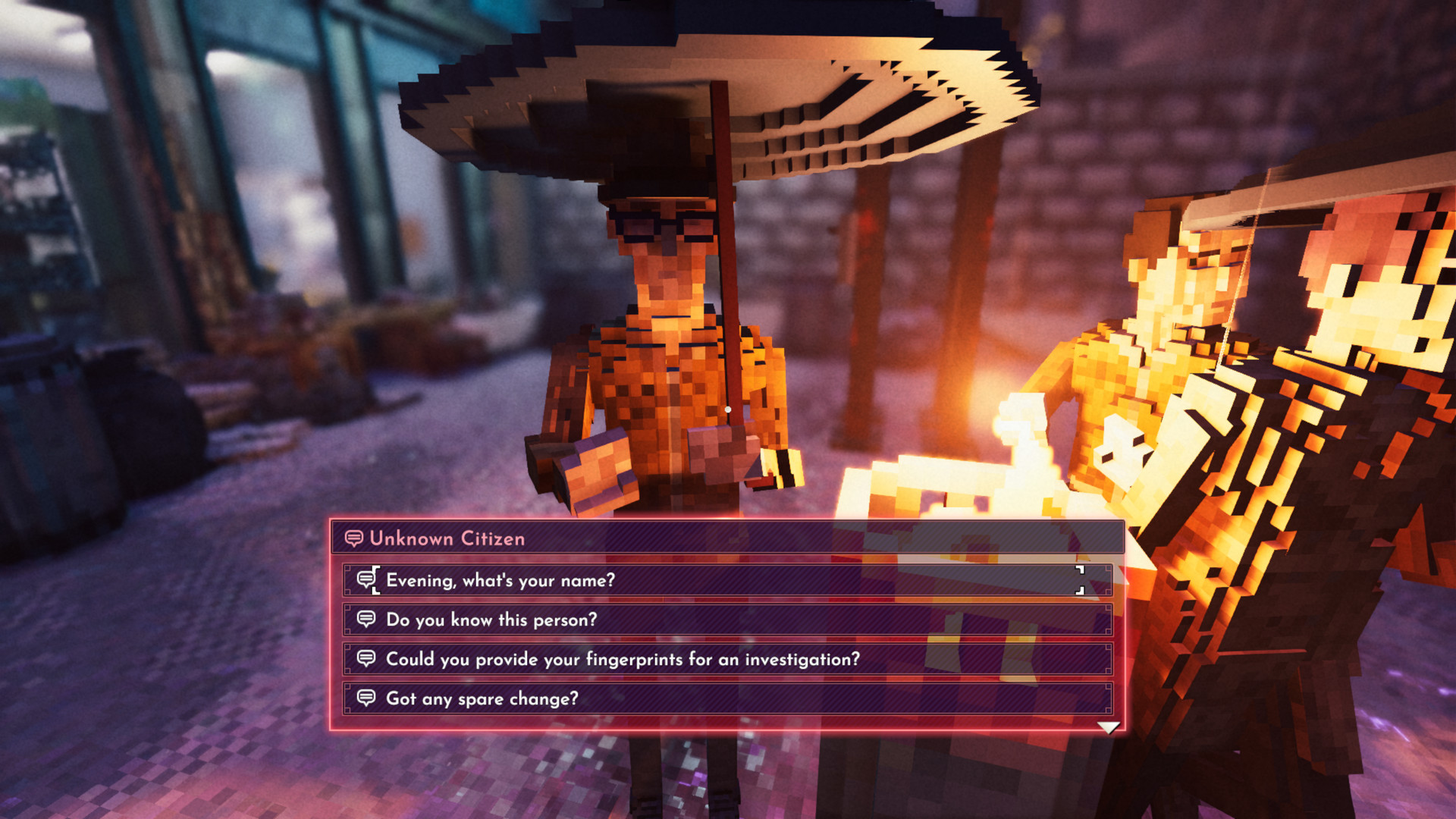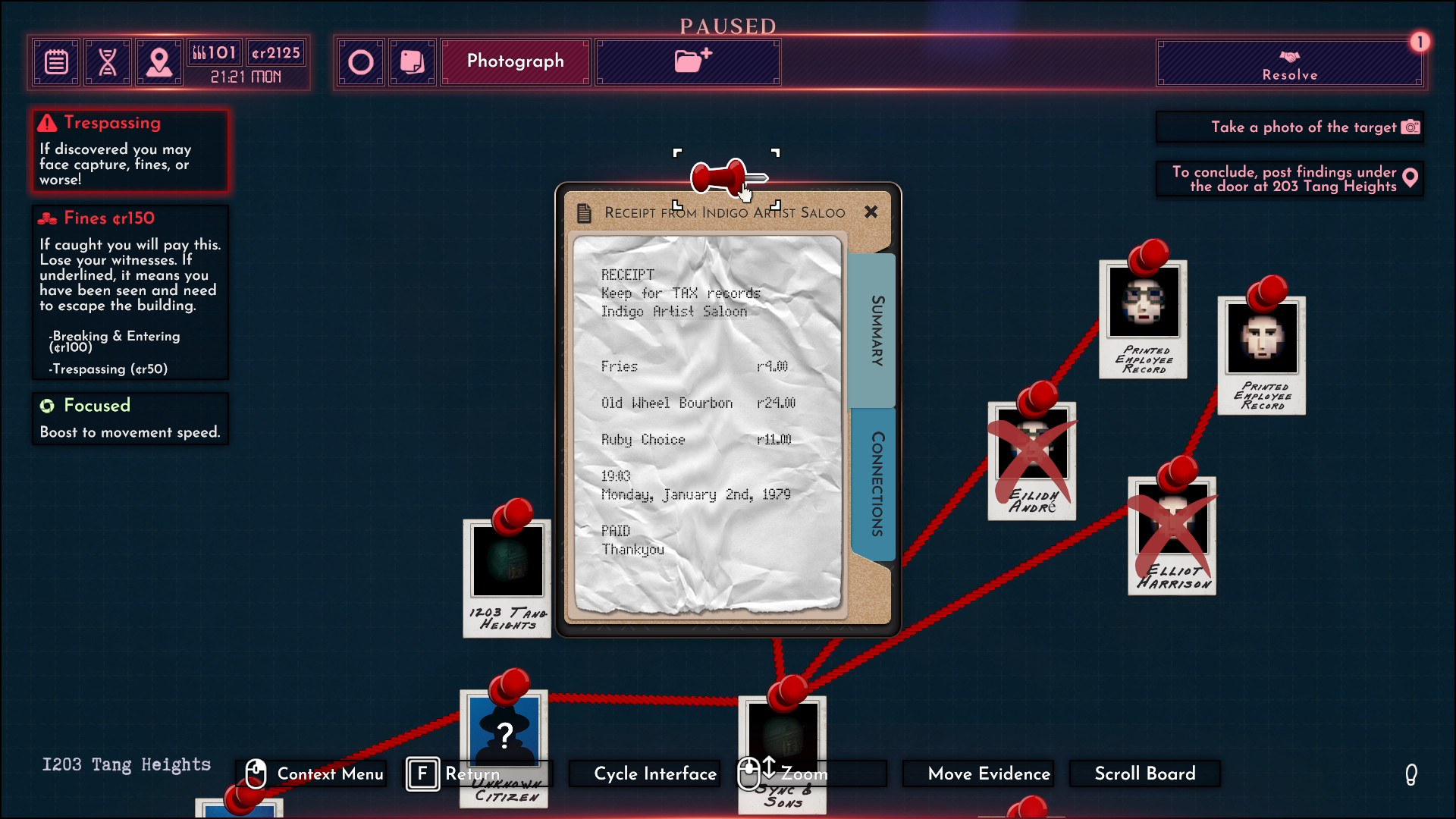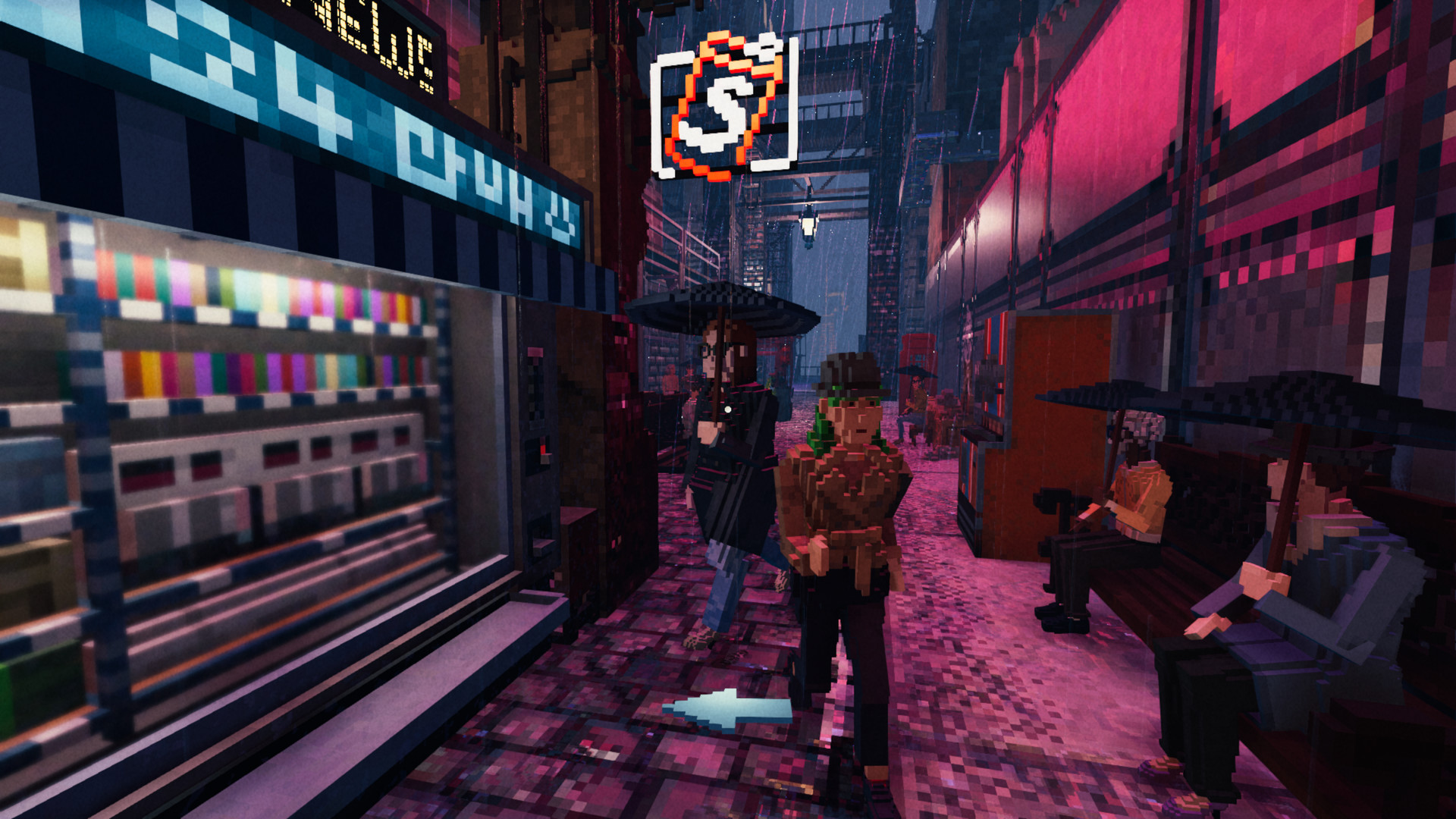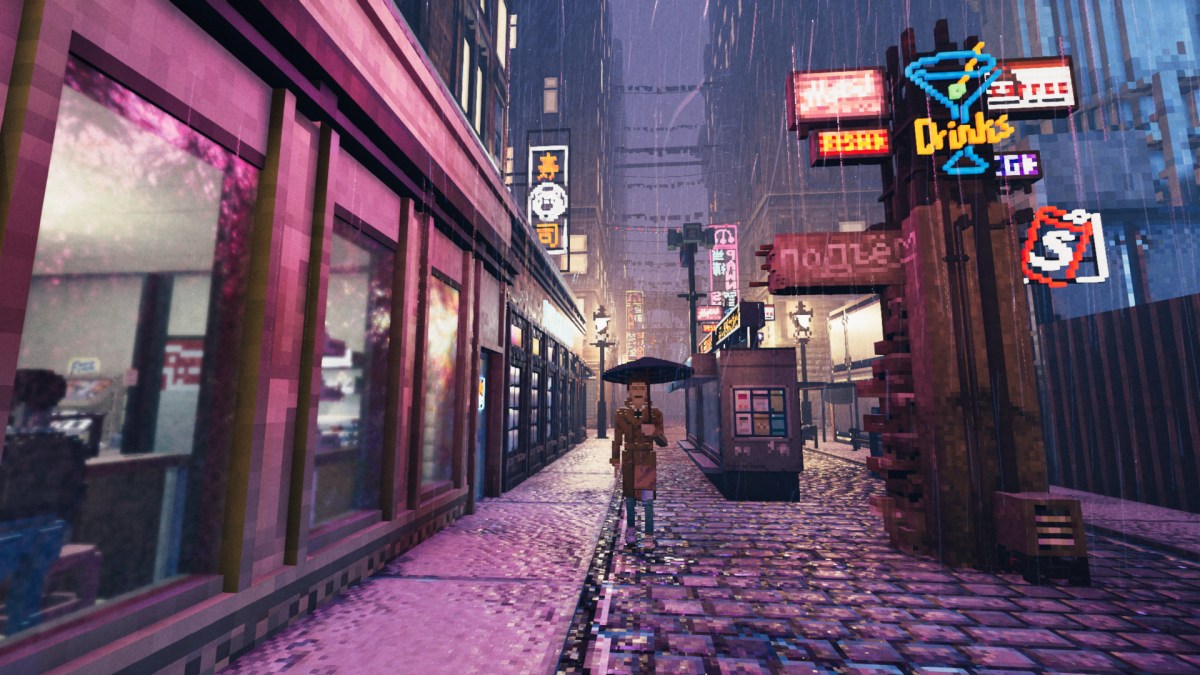I broke into 302 Schumacher Terrace after someone slid a note under my apartment door. The note said, “Find Craig Bernasconi.” I found him all right: crumpled in a gory heap in the corner of his apartment, a spent shell casing at his feet and a bloody hammer on the mantelpiece. Who killed him? And why?
Developer ColePowered Games describes Shadows of Doubt as a “procedurally-generated sandbox stealth game with a city of secrets at your fingertips!” And, yep, it did that! Think Deus Ex or Dishonored, but with a wholly simulated, procedurally generated world full of citizens with apartments, jobs, routines, and relationships, living their lives in a hyper-stylized, Lego-like cyberpunk 1980s.
It rocks.
I check Craig’s phone and use his nearby Citizen’s Directory (a phonebook) to trace the number to a woman named Olivia. I’ve got a new problem: Using the phone triggered a silent alarm, and the stormtrooper-like Enforcers are pounding on Craig’s door. I’m not a cop, so I’m trespassing — and if they catch me, they’ll kill me. Scrambling for a way out, I spot a note pinned to Craig’s fridge: Olivia, Shark Sandwich Shop, tonight.
I don’t have time to process the note. In the bathroom, I find the best friend of the immersive sim player: an air vent. I clamber up as the Enforcers bust the door down, assuming I’ll be able to sneak out of the vent in the hallway and escape.

It’s here Shadows of Doubt‘s ambition starts to show some cracks. The vent doesn’t lead to the hallway or an easy escape. I have only two options: left or right. I’m not an HVAC expert, but this seems like a pretty crappy circulation system. I go right, and slowly creeping through an air vent does trigger some nostalgia — but not the good kind. Instead of an exit to another apartment, the shaft leads me straight down. Behind me, I hear the Enforcers searching the apartment. I go down.
The slow pace of creeping through the air vent is frustrating, especially since this Steam Next Fest demo only gives you 90 minutes to solve the tutorial case. Mistakes are costly, but then, in a real investigation, the clock is always ticking. Is the simulation in Shadows of Doubt sophisticated enough to model my suspects fleeing from my pursuit, digging in deep to make solving this murder harder and, ultimately, impossible? Will Craig Bernasconi’s death end up as another open case file rotting in a cabinet somewhere? It’s hard to say in a limited demo, but the illusion intoxicates.
The vent finally ends at a grate into some other apartment bathroom that looks similar to Craig’s. Of course, not every apartment will be unique, and in the real world, apartments in the same building look similar. I give the game a break. I hop out, satisfied I’ve escaped the cops, my mind whirling about the connection between Craig, Olivia, and his killer. I’m still patting myself on the back when the apartment owner opens the bathroom door. We wrestle. I slip by him and try to get out the front door, but it’s locked. He corners me and breaks my leg. I get by him again and scramble into the vent, but now my broken leg slows me down even more. The clock is still ticking.

Immersive sims take simple concepts and pile on systems over systems. In Prey, you’re exploring a haunted space station. In Dishonored, you’re an assassin. In Thief, you’re a… you get the idea. Shadows of Doubt takes this same formula and applies it to a detective story, but in 2023, immersive sim tropes are a formula themselves. I know there are multiple ways to enter every room. I know I can hack that security camera or pick that lock, and if I try something, I know the designers will try to accommodate me.
When I finally escape Schumacher Terrace, I consult my case board, a sprawling web of clues and notes I’ve assembled throughout the investigation, connected by red string and pushpins: victim — likely murder weapon — home address — work address — potential witness — possible suspect. Not everything will be relevant, but I have a few leads. I hobble to the Shark Sandwich Shop — my leg is still broken — and see if anyone saw my victim earlier that night.
The streets of this city, which I named, along with my character, at the beginning of the game, are busy in that early Elder Scrolls way. Characters rush about and spout off random, subtitled barks about the weather. There is a definite artificiality to everything. This is not the photoreal Los Santos of Grand Theft Auto V. Not a living world but a sandbox for a murder mystery fantasy, where every grain of sand has an AI routine.

I get to the diner, having failed to find a “splint” to mend my leg. The diner is a little mini Deus Ex level, with a hackable power box, a locked backroom, and probably an exterior air vent or roof access. I play detective, not spy, and start showing Craig’s picture around. The owner is reluctant to talk, so I bribe him. He only says he’s seen the guy — but not when or where. The cook flees into the kitchen when I approach. A customer is more helpful. She tells me she saw Craig at Koch Tower, and her dinner guest agrees.
With a new lead, I set off for Koch Tower, but something catches my eye outside: a CCTV tower with a terminal. I log in and scroll back through the records to an hour before Craig was murdered. Sure enough, there he is, exiting the diner — with Olivia. The sophistication of the systems at play in Shadows of Doubt hit me almost as hard as the dopamine of having made a connection in the case. If the rest of the game is as dense as this tutorial, it may end up being the most satisfying detective game ever made.
The clock is still ticking. I hike up my collar to protect myself from the rain and set off into the night.






Published: Feb 13, 2023 06:21 pm